Tiny Asian pest puts squeeze on Florida fruit growers
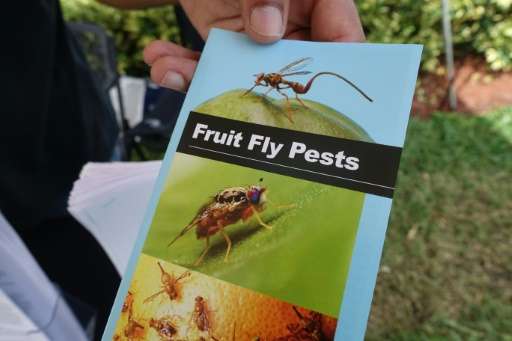
Victoria Barnes was about to harvest her early season avocados when the Oriental fruit fly reared its tiny head and all but shut down south Florida's $1.6 billion agriculture industry.
Barnes owns two avocado groves in Redland, just south of Miami, where authorities have quarantined 97 square miles (25,122 hectares) of farmland—an area twice the size of Paris—over the fly invasion.
"Everything came to a standstill," she said.
None of the 165 fruit flies trapped since August have been found on her property, yet the farmer estimates she has already lost 12,000 pounds (5,440 kilograms) of fruit.
"We have over a thousand trees and since the last days of August, nothing has been picked. Nothing has gone out of this farm."
In Florida, a land where invasive creatures are a constant threat to the natural balance—from giant African snails to Burmese pythons to Argentine tegu lizards—the Oriental fruit fly is considered among the most dangerous.
Barnes called the invasive pest "probably the most devastating insect that we could have."
Known formally as Bactrocera dorsalis, the fly can travel long distances and feeds on 432 different kinds of plants, including mangoes, bananas, tomatoes, figs, watermelon, cucumbers, potatoes, green beans, lemons and lychees.
Its common range is from southern China to northern India, and US officials say they do not know how the fly got here this time.
"Countries with established Oriental fruit fly populations have typical crop losses of 25-50 percent," warned a Florida Department of Agriculture leaflet being handed out at a gas station in the quarantine zone.
"If it becomes established in the continental United States, it will ravage commercial agriculture."
'Don't move fruit'
Along the main road into Redland, a large traffic sign warns drivers, in both English and Spanish, not to move fruit, due to the risk of spreading the fruit fly.
Hundreds of growers of tropical delicacies are on lockdown. Some are entirely out of business, others restricted to a small percentage of their typical output.
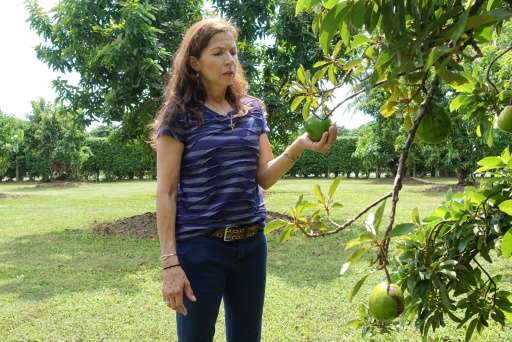
Salvador Fernandez of J&C Tropicals estimates that his business lost about a million dollars in sales in just five weeks.
"Pretty much every single fruit in the Florida tropical season is under quarantine right now," he told AFP.
Officials have fought off the Oriental fruit fly in Florida and California before, but never has Florida seen an invasion of this scale.
The 165 flies found so far represent "by far the largest outbreak we've had in this state's history," said agriculture commissioner Adam Putnam.
Oriental fruit flies may live only 30 to 45 days during warm seasons, but the females can produce up to 1,500 eggs in that time span.
The female injects up to 20 eggs at a time into the pulp of a fruit. The larvae damages the fruit from the inside and causes it to drop from the tree, rendering it unsellable.
Under an agricultural state of emergency issued by Putnam, the quarantine will last at least until the end of February, or three life cycles since the last fly was found on October 10.
"Before, it was found mostly in urban areas where eradication is much easier," said entomologist Daniel Carrillo, who is working with farmers and government officials to eradicate the fly.
"This time it is a little bit more problematic because the fruit fly is present in an agricultural area where there are multiple potential hosts."
Higher prices
In order to ship produce, growers must sign a compliance agreement and follow a strict regimen of pesticide applications and inspections.
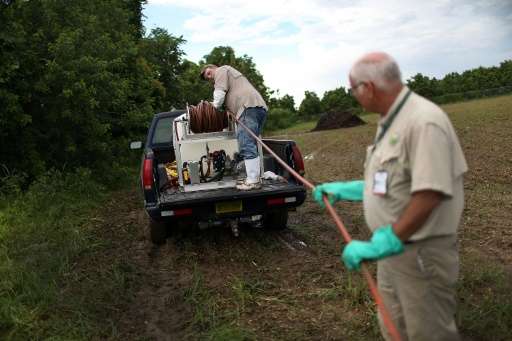
But the task is daunting, said one agriculture official speaking on condition of anonymity.
"There are eight of us inspectors for 800 farmers," he told AFP.
A spokeswoman for the Florida Department of Agriculture declined to give specifics on staffing for the eradication effort, saying only that "numerous employees" were working on the task alongside the US Department of Agriculture.
"The department has entered more than 1,200 compliance agreements with growers, packers and others within the industry in order to conduct pre- and post-harvest treatment that would allow the products to be moved into the marketplace," communications director Jennifer Meale wrote in an email to AFP.
For Noel Ruiz, who sells tropical trees and runs a fruit stand in Redland that used to bring in sales of up to $700 per day, the requirements were just too much.
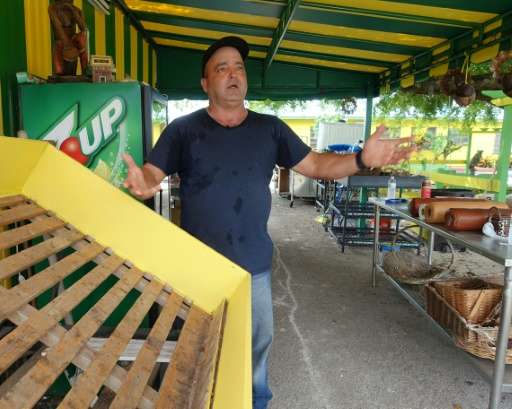
His display boxes—once filled with avocados, mameys, sweet potatoes, onions and bananas—are empty.
For consumers, the fly invasion means higher prices and harder-to-find produce, particularly passion fruit, dragon fruit and bright green Florida avocados.
Produce that does reach the marketplace will have been treated with more pesticides, though officials say the tools they are using have been proven safe.

"If before, a box of avocado cost 10 dollars, now it is 40 dollars. Everything is more expensive," said Ruiz, standing beside a deserted outdoor picnic area.
"We have not been able to sell anything since the problem with the fly began."
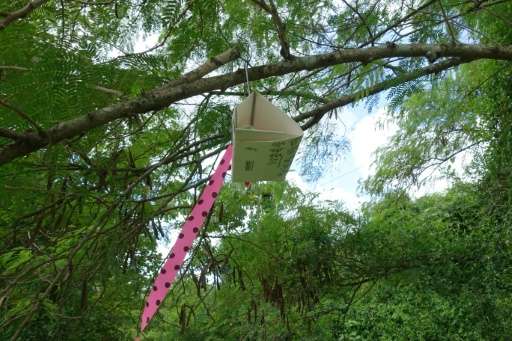
© 2015 AFP



















